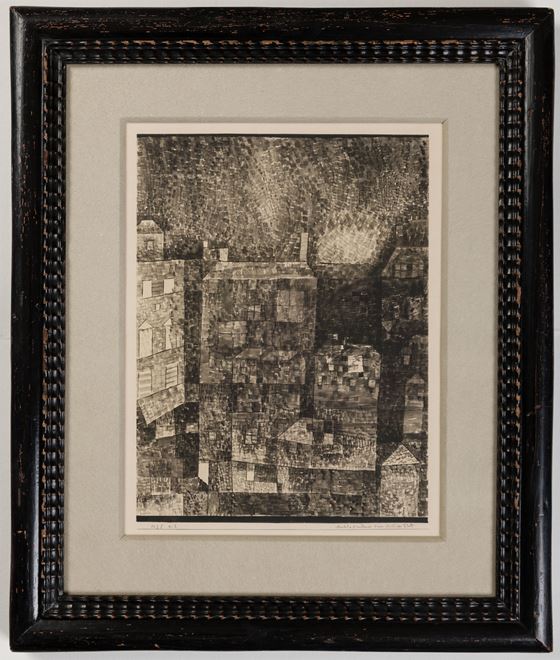Description & Technical information
Nacht-Eindruck einer südlichen Stadt (Night Impression of a Southern Town) reflects Paul Klee’s experiences of the landscape of the island of Sicily. The artist had made his first visit to Italy in April 1914, on his way back from a trip to Tunisia. His steamship sailed along the coast of Sicily, and he spent a day in Palermo, noting in his diary the facades of the buildings and the striking appearance of the hillside towns of the area. Memories of this brief visit inspired him to return to Sicily ten years later, in the summer of 1924. Klee and his wife took lodgings at Mazzarò, a town on the sea below Taormina, for two weeks. The trip resulted in more than two dozen watercolours of Sicilian subjects, mostly of landscapes, which are characterized by intense and vibrant colours.
Klee remained under the spell of Sicily – which he described as ‘pure landscape in the abstract’ - for much of the next year. In a letter to his wife Lily in November 1924, written from Weimar a few days before the enforced closing of the Bauhaus there, Klee noted that ‘Here everyone is in feverish activity in anticipation of the great crisis about to happen in eight days. I am still so filled with Sicily that it hardly touches me.’ A few days later he wrote again, ‘I experience nothing, don’t even want to. I carry the mountains and the sun of Sicily within me. Everything else is boring.’
This drawing is dated early in 1925, and must reflect Klee’s memories of his trip to Sicily the previous summer. Colour is extraneous in this nocturnal view of a southern town, which depicts the anonymous village in rich detail, with an arrangement of delicately washed grisaille tones applied in small, tesserae-like blocks that verge on pointillism. Although drawn in the artist’s Weimar studio rather than on the spot, the use of a mosaic-like technique in this drawing could well reflect Klee’s close study of the rich mosaics of the churches of Palermo and nearby Monreale.
The monochrome grisaille technique of Nacht-Eindruck einer südlichen Stadt (Night Impression of a Southern Town) is also seen in only one other major work on paper of 1925; a pen and ink wash drawing entitled Kind im Asterngarten (Child in the Aster Garden), formerly in a Swiss private collection, which appeared at auction in Switzerland in 2005. In the same year of 1925, Klee used a similar mosaic technique in a handful of colour works executed in watercolours and oils, as well as in some mosaic-like paintings in which the colour squares are larger and more prominent.
As one modern scholar has written, ‘Klee was a gardener in a little piece of paradise. Under his direction his charges blossomed beautifully, full of harmony and grace. His motifs seem to develop with consummate ease, almost – it would seem – of their own accord, and whatever basic note he strikes, his colours contrast in such a way that their sound blends in inevitable harmony. Even when he compresses his pictorial resources to the utmost, he never slips into anything uncontrolled or random. Klee formulates subtly sensitive offerings for the viewer’s eye, offerings so cautious and gentle that they readily elide consumption in this day and age. Paul Klee’s art demands undivided attention – and it is also capable of opening one’s eyes to something that lies beyond the image itself.’
The present sheet, although not a watercolour per se, was regarded by Klee as finished and complete work of art, rather than a drawing or study, and as such was released to his dealer Hans Goltz for sale. Shortly after it was drawn, Nacht-Eindruck einer südlichen Stadt (Night Impression of a Southern Town) was exhibited at Goltz’s gallery in Munich in May and June of 1925, as part of an exhibition of some 214 works by Klee.
Provenance: Private collection, Bern, in 1948
Anonymous sale, Bern, Kornfeld und Klipstein, 9-10 June 1976, lot 506 (sold for 58,000 CHF to Berggruen)
Berggruen & Cie, Paris, until 1981
Fuji Television Gallery Co. Ltd., Tokyo\
Gallery Kasahara, Osaka
Acquavella Galleries, New York, in 1982
Walter Feilchenfeldt, Zurich
Acquired from him in 1983 by a private collector, Austria
Anonymous sale (‘The Property of a Private European Collector’), London, Christie’s, 24 June 2004, lot 337 (bt. Krugier for £318,850)
Jan Krugier and Marie-Anne Poniatowski, Geneva
Stephen Ongpin Fine Art, London, in 2015
Private collection, California.
Literature: Paul Klee, Oeuvre-Katalog, MS., 1925, no.43 (N3); Du, October 1948, illustrated p.24; Bern, Paul Klee Foundation, Paul Klee. Catalogue Raisonné, Vol.IV 1923-1926, 2000, p.300, no.3724 (1925.43); Christiane Lange and Roger Diederen, ed., Das ewige Auge – Von Rembrandt bis Picasso: Meisterwerke aus der Sammlung Jan Krugier und Marie-Anne Krugier-Poniatowski, exhibition catalogue, Munich, 2007, pp.342-343, no.163; Paris, Société du Salon du dessin, 25e Anniversaire du Salon du Dessin 1991-2016, 2016, illustrated p.218.
Exhibitions: Munich, Galerie Neue Kunst - Hans Goltz, Paul Klee, Zweite Gesamtausstellung 1920-1925, May-June 1925, no. 202; Tokyo, Fuji Television Gallery and Osaka, Gallery Kasahara, Paul Klee, 1981; New York, Acquavella Galleries, XIX & XX Century Drawings, Watercolors, Pastels, Gouaches, Collages, October-November, 1982, no.16; Munich, Kunsthalle der Hypo-Kulturstiftung, Das ewige Auge – Von Rembrandt bis Picasso: Meisterwerke aus der Sammlung Jan Krugier und Marie-Anne Krugier-Poniatowski, 2007, no.163.
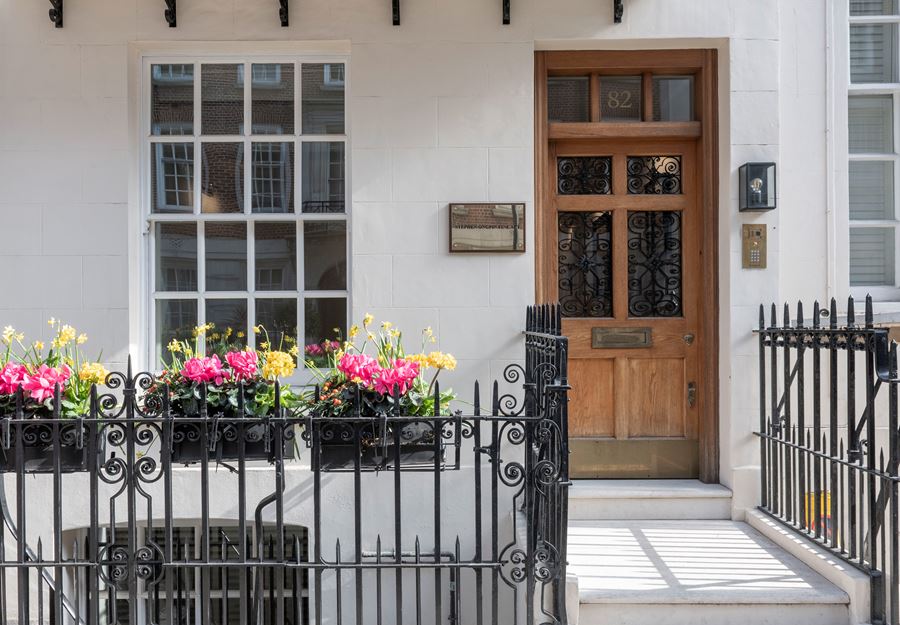
Discover the gallery
Stephen Ongpin Fine Art
Old Master, 19th Century and Modern Drawings, Watercolours and Oil Sketches
More Works From This Gallery

Stephen Ongpin Fine Art
A Horse-Drawn Carriage and its Team
Jacques-François-Joseph SWEBACH-DESFONTAINES (Metz, 1769 - Paris, 1823)
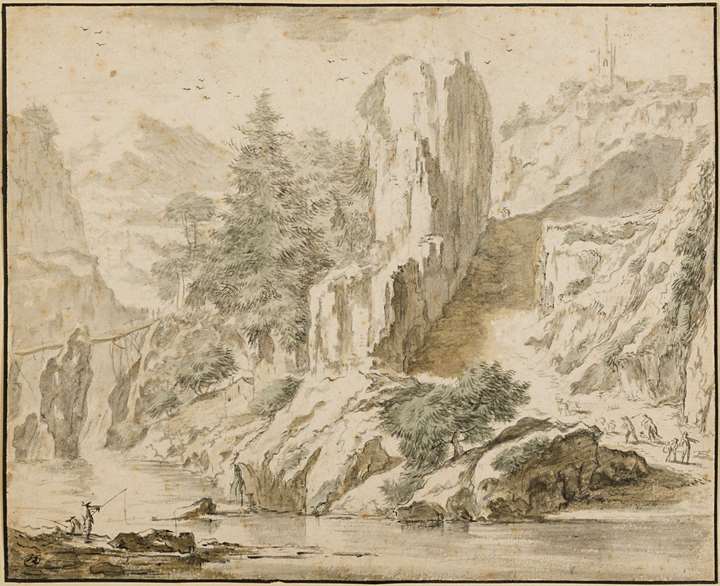
Stephen Ongpin Fine Art
A Mountainous River Landscape with Fishermen
Herman SAFTLEVEN (Rotterdam, 1609 - Utrecht, 1685)
![Illustration for Caprices Décoratifs: Oiseaux de la Nouvelle-Guinée [Birds of New Guinea])](https://images.masterart.com/StephenOngpinFineArtMedia/Artworks/Jules-HABERT-DYS-Original Illustration for Caprices Décoratifs Oiseaux de la Nouvelle-Guinée Birds of New Guinea)_T638451686580251969.jpg?width=720&height=1200&mode=max&quality=60)
Stephen Ongpin Fine Art
Illustration for Caprices Décoratifs: Oiseaux de la Nouvelle-Guinée [Birds of New Guinea])
Jules Habert-Dys (1850 - 1930)
![Illustration for Caprices Décoratifs: Oiseaux de la famille des Martins-pêcheurs [Birds of the Family of Kingfishers]](https://images.masterart.com/StephenOngpinFineArtMedia/Artworks/Jules-HABERT-DYS-Illustrations for Caprices Décoratifs Oiseaux de la famille des Martins-pêcheurs Birds of the Family of Kingfishers_T638451692374783408.jpg?width=720&height=1200&mode=max&quality=60)
Stephen Ongpin Fine Art
Illustration for Caprices Décoratifs: Oiseaux de la famille des Martins-pêcheurs [Birds of the Family of Kingfishers]
Jules Habert-Dys (1850 - 1930)
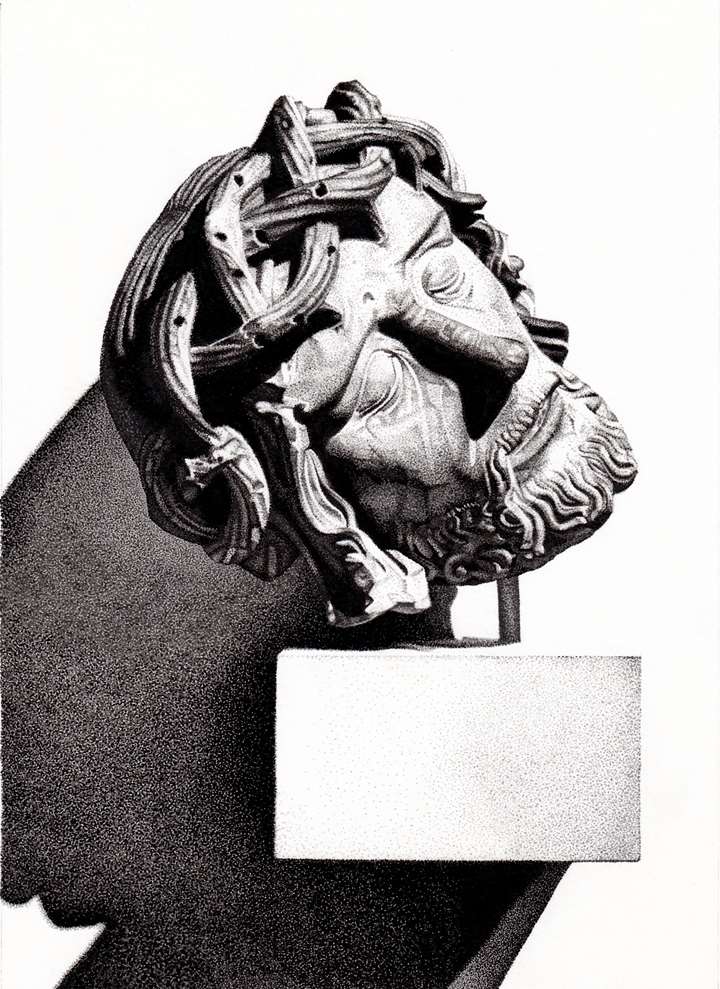
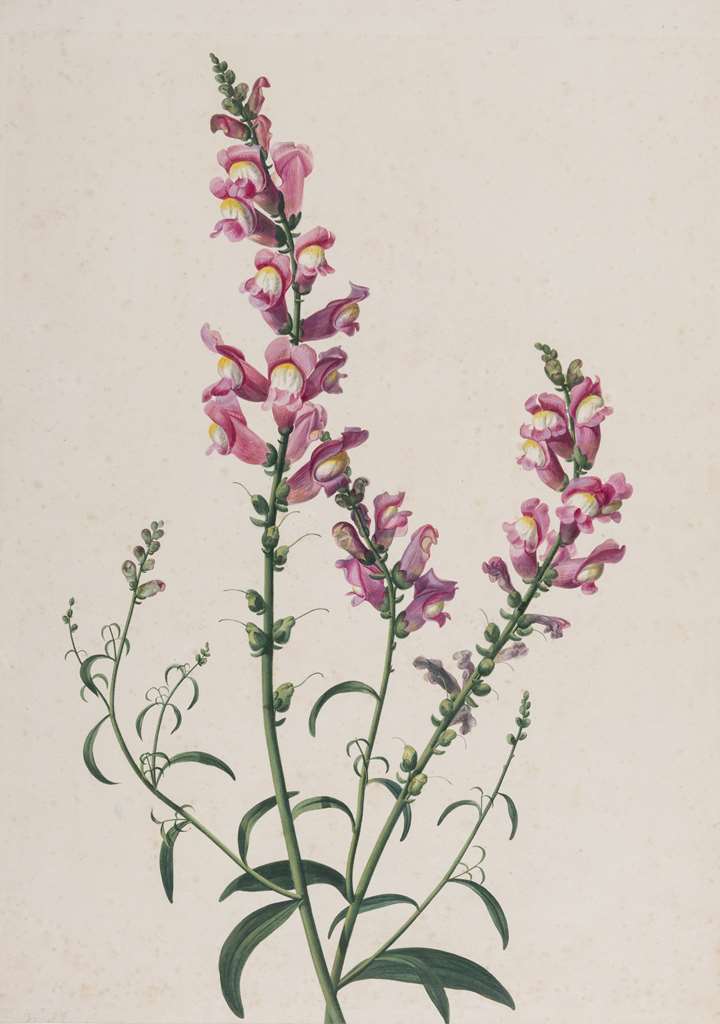

_T638446548214957035.jpg?width=560&height=700&mode=max&scale=both&quality=80)
